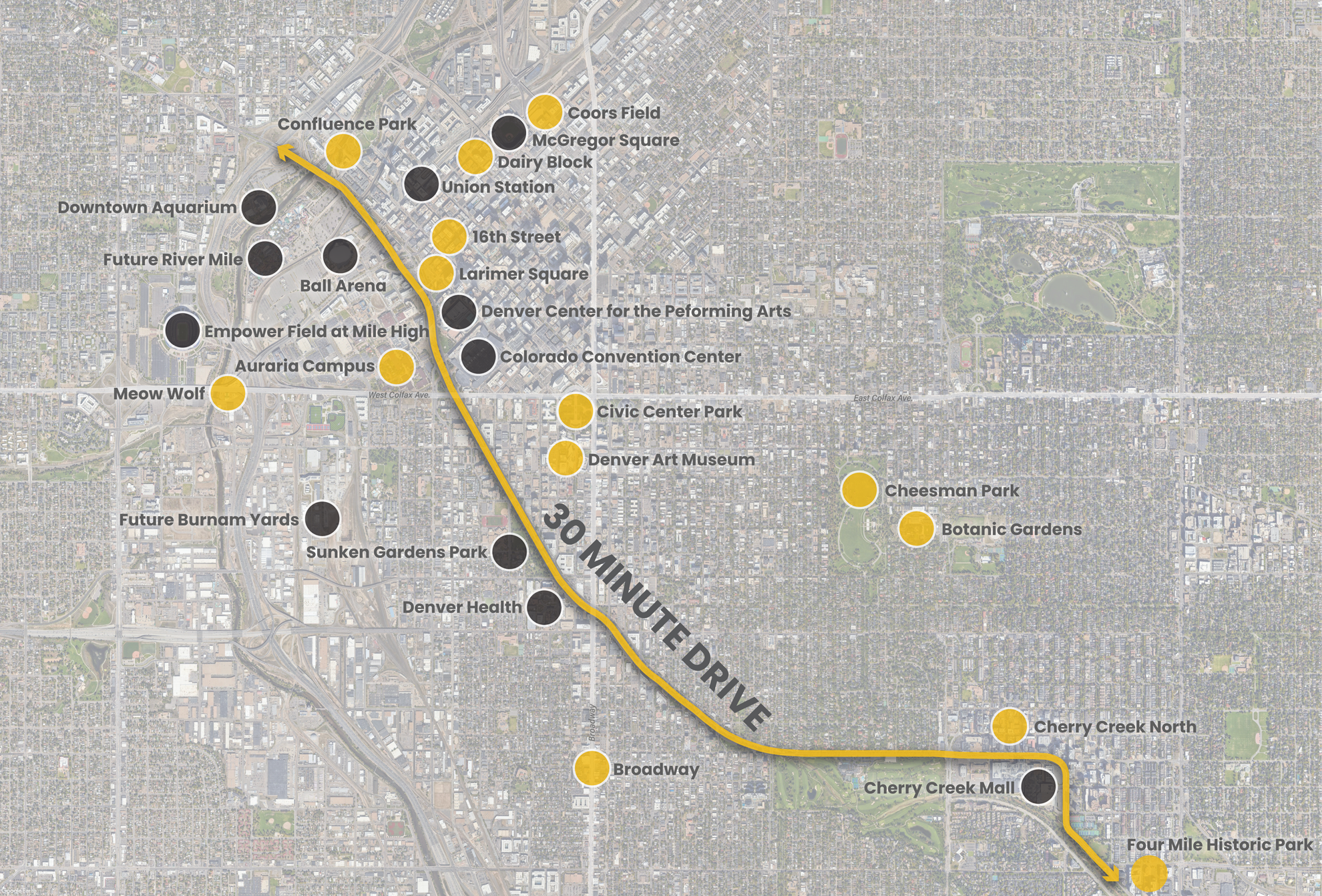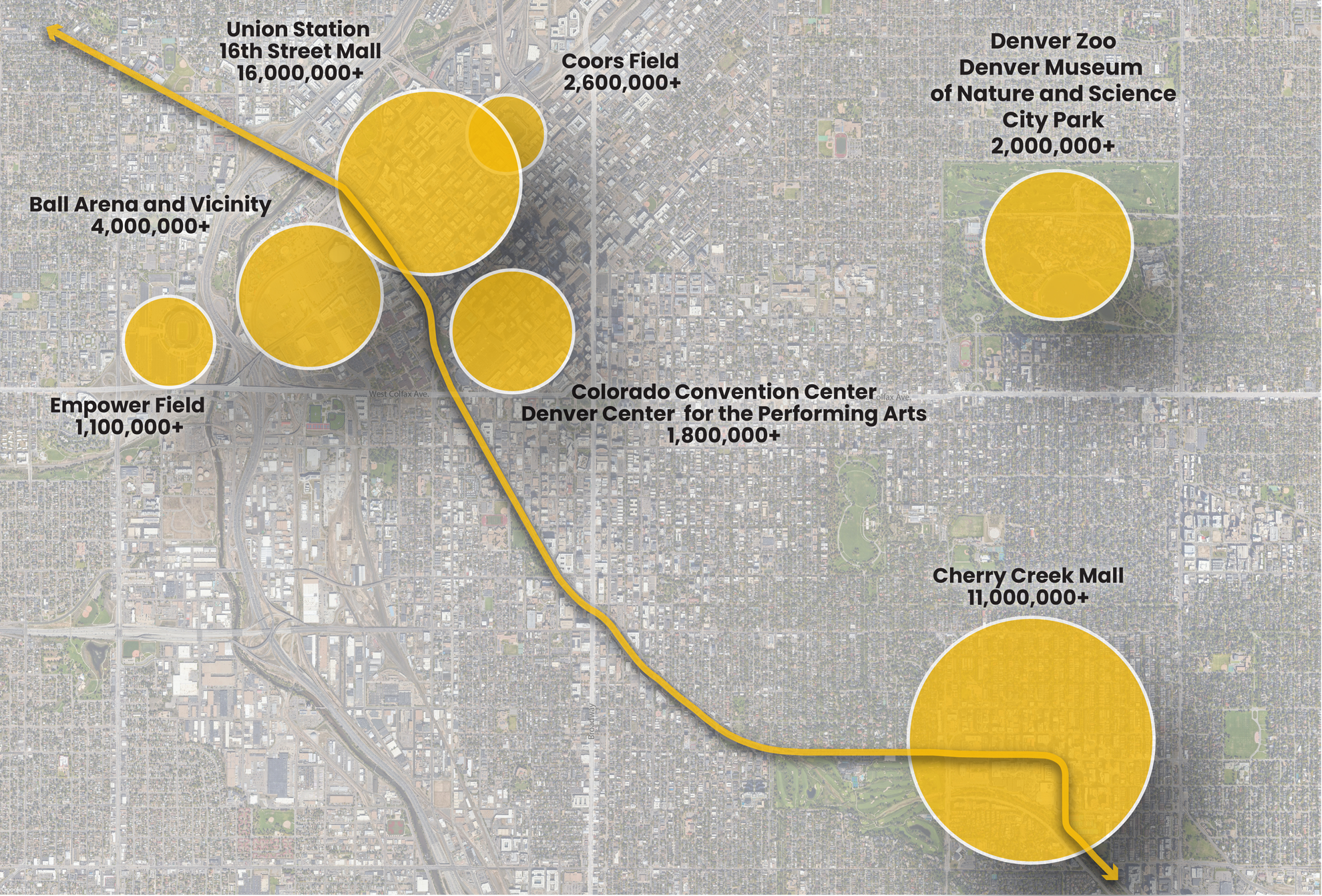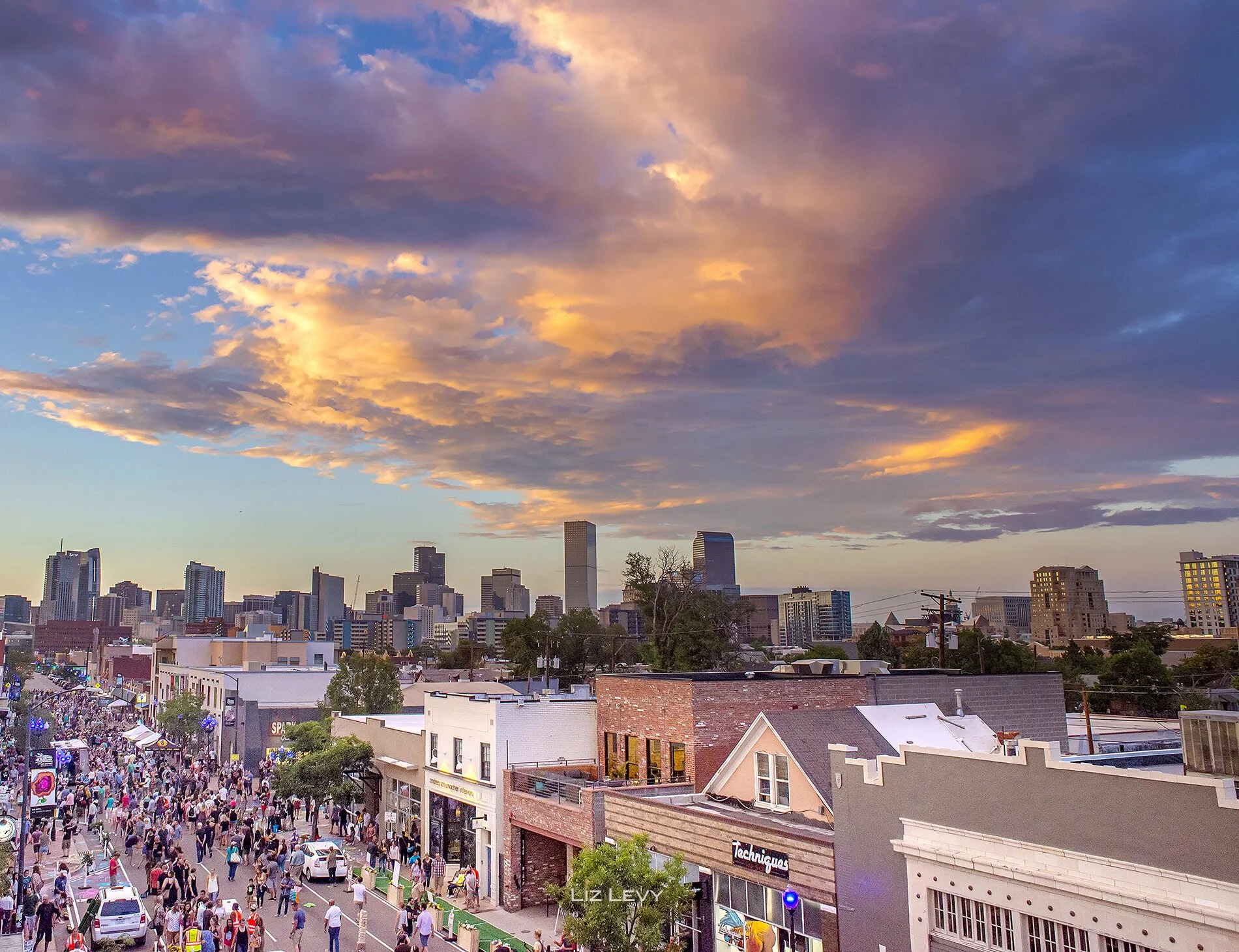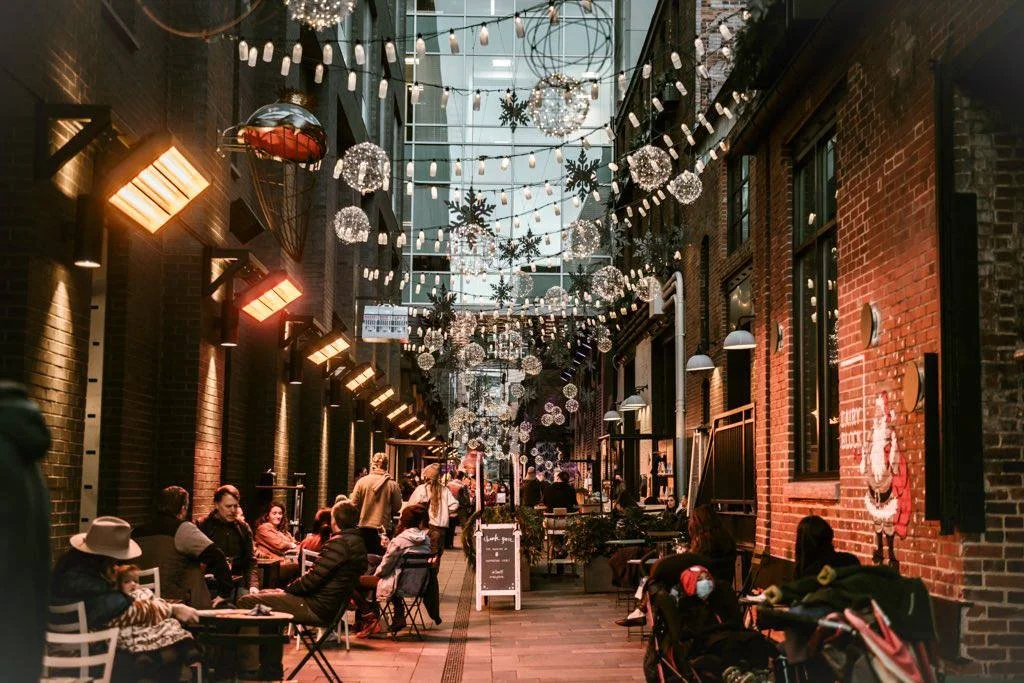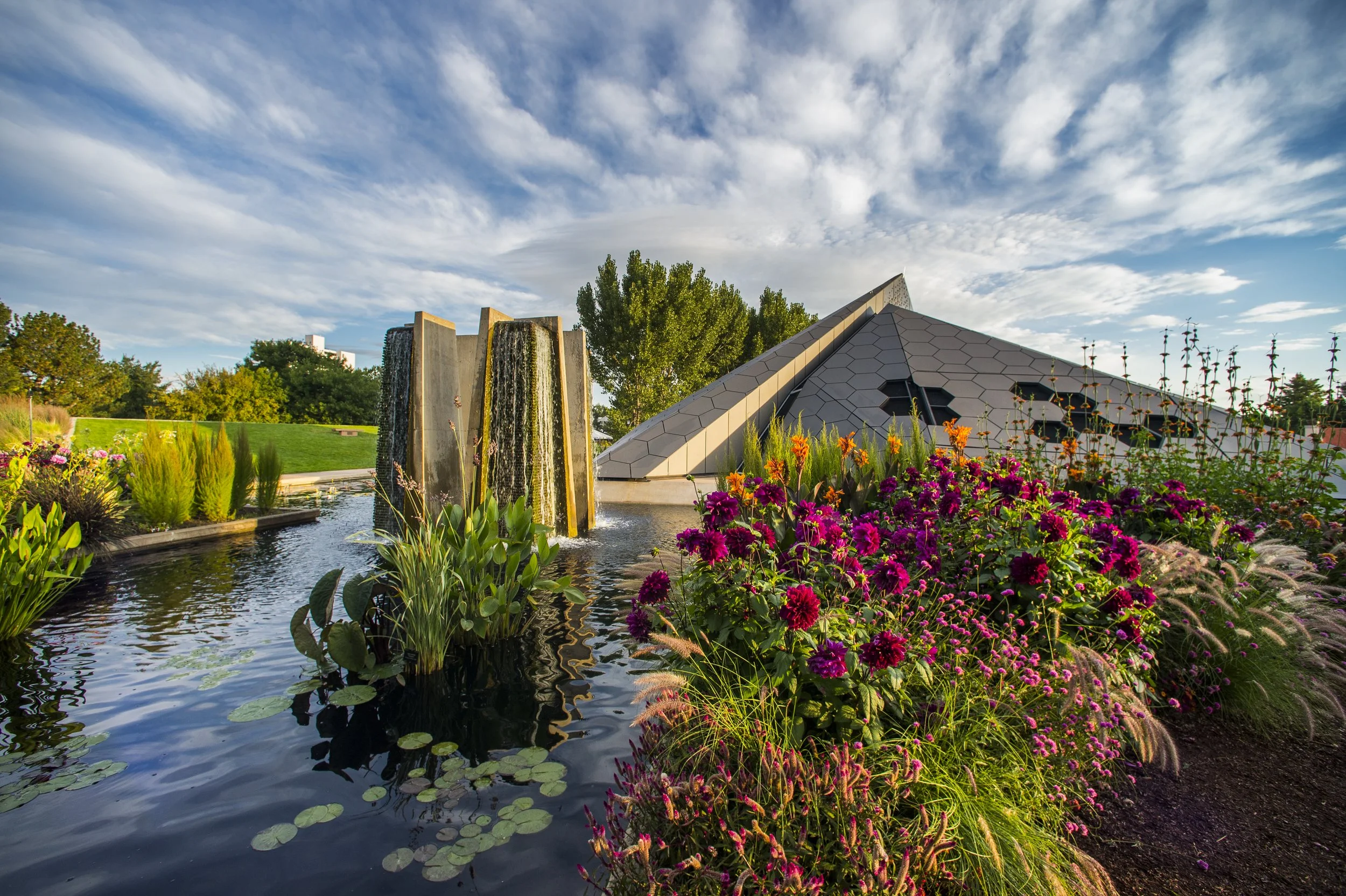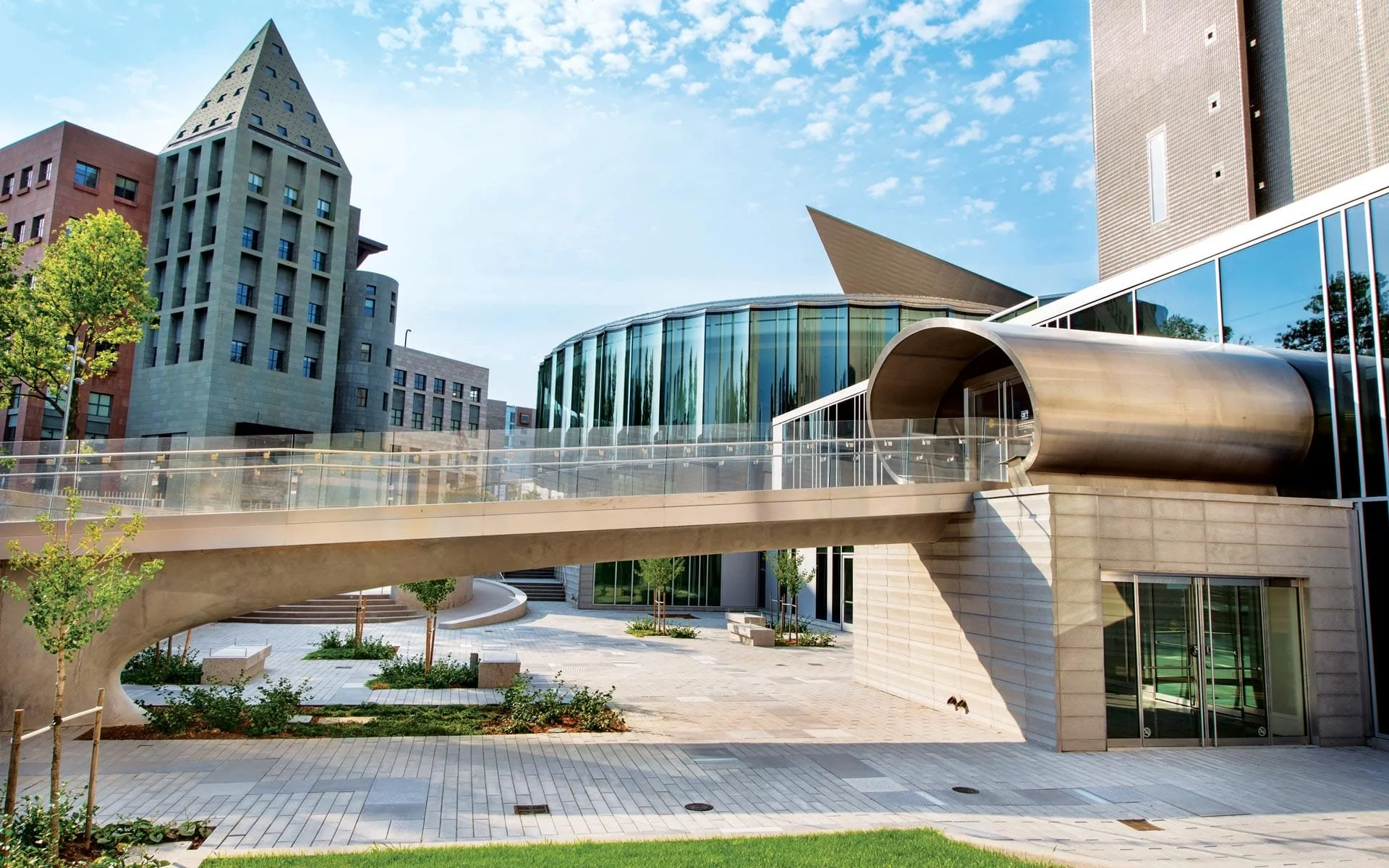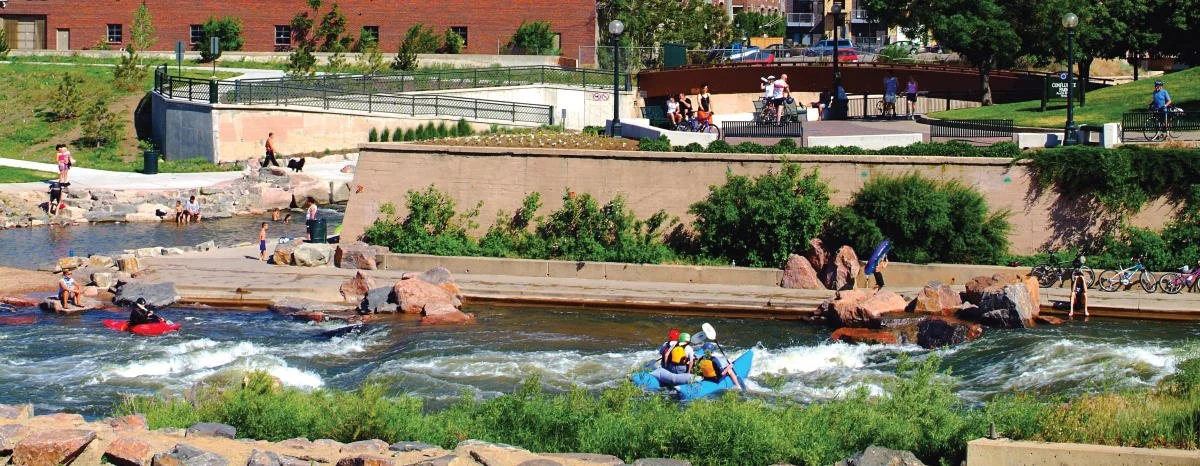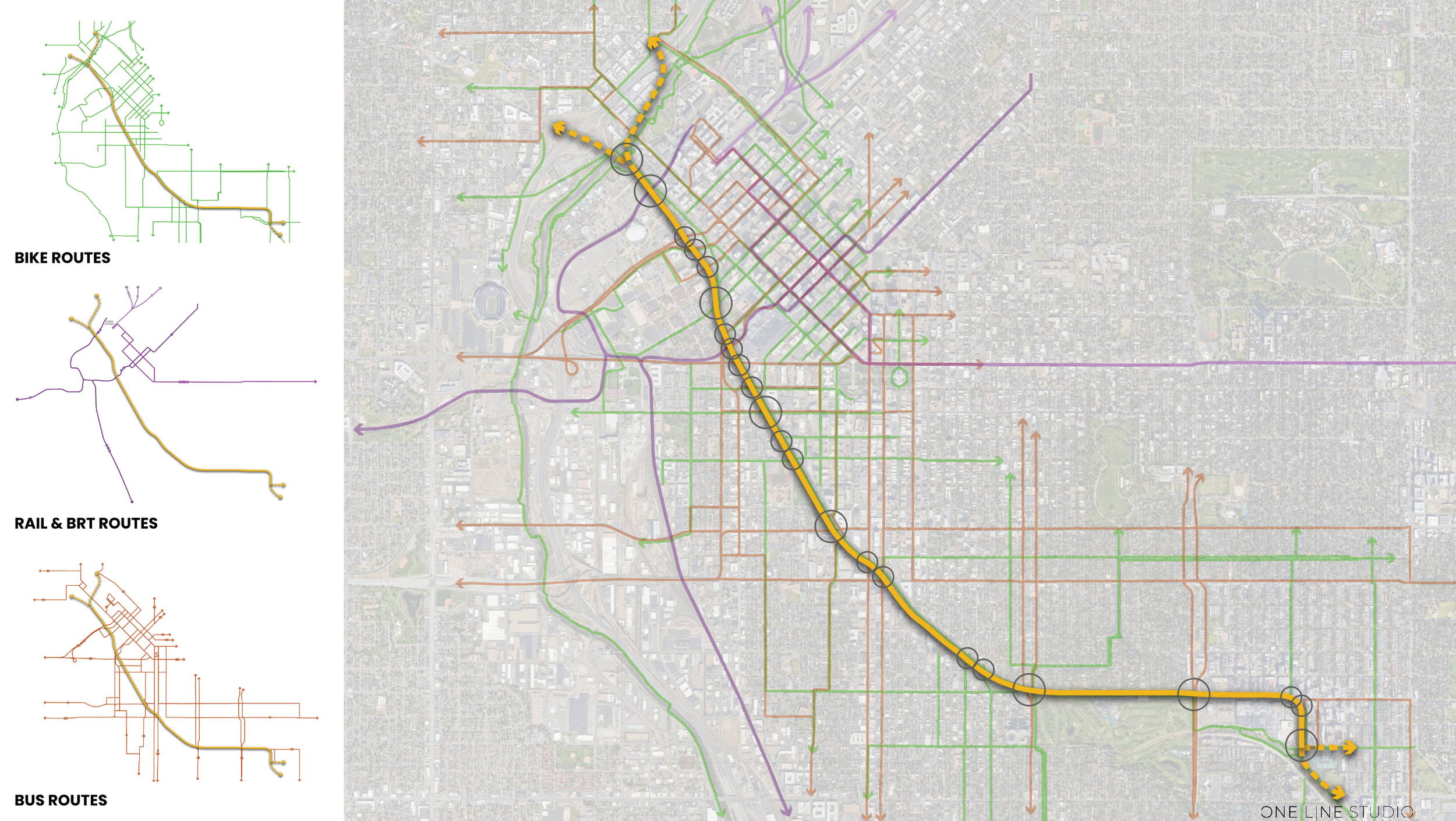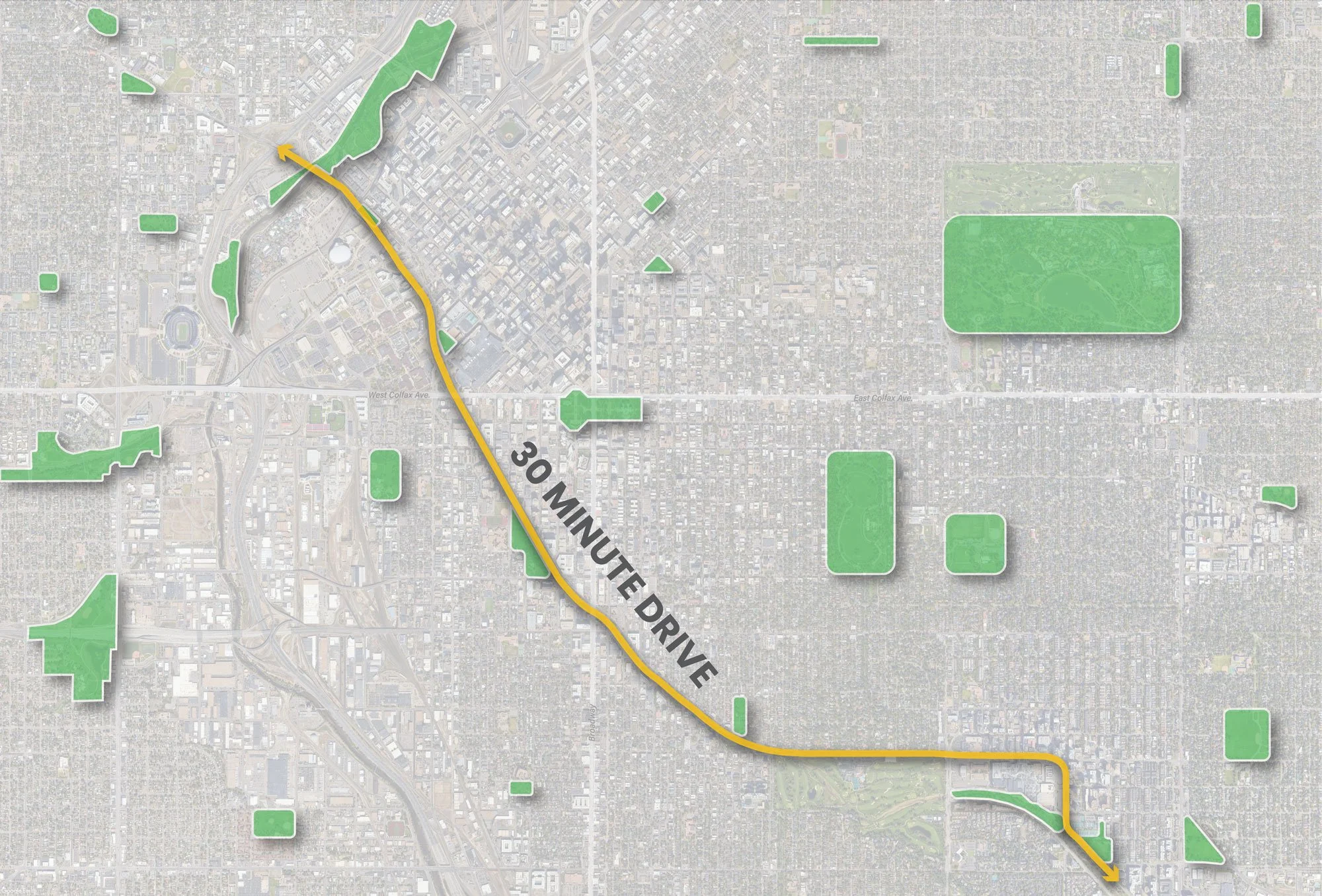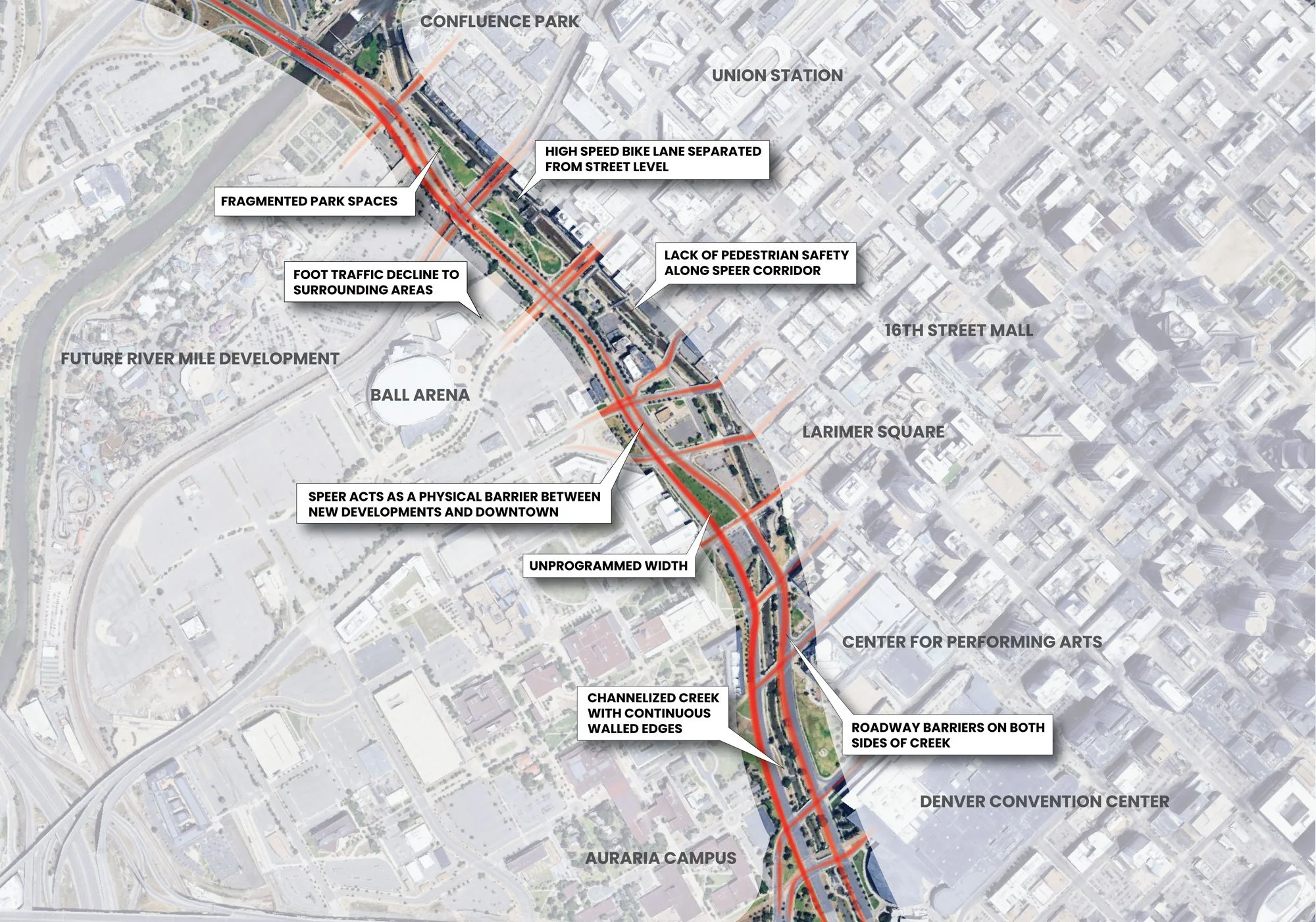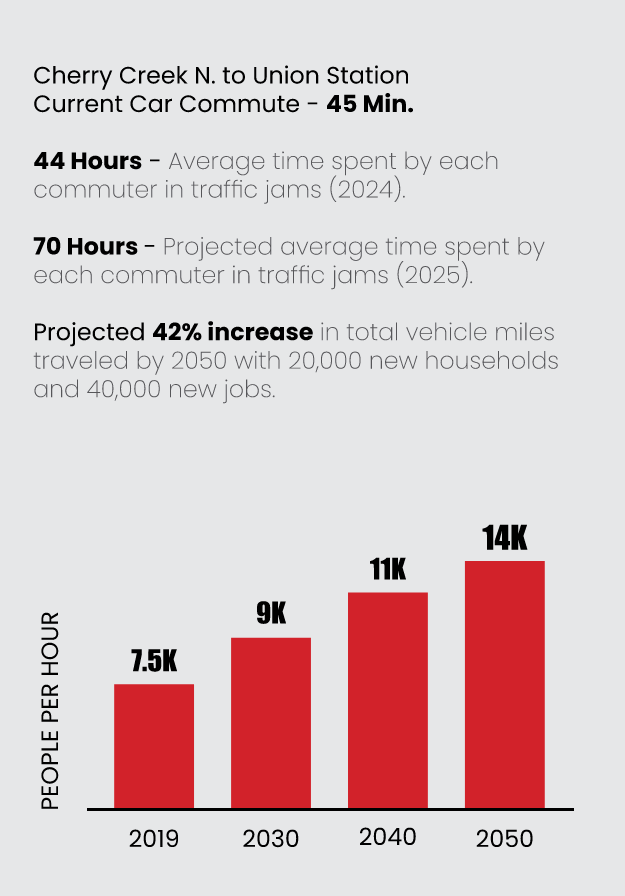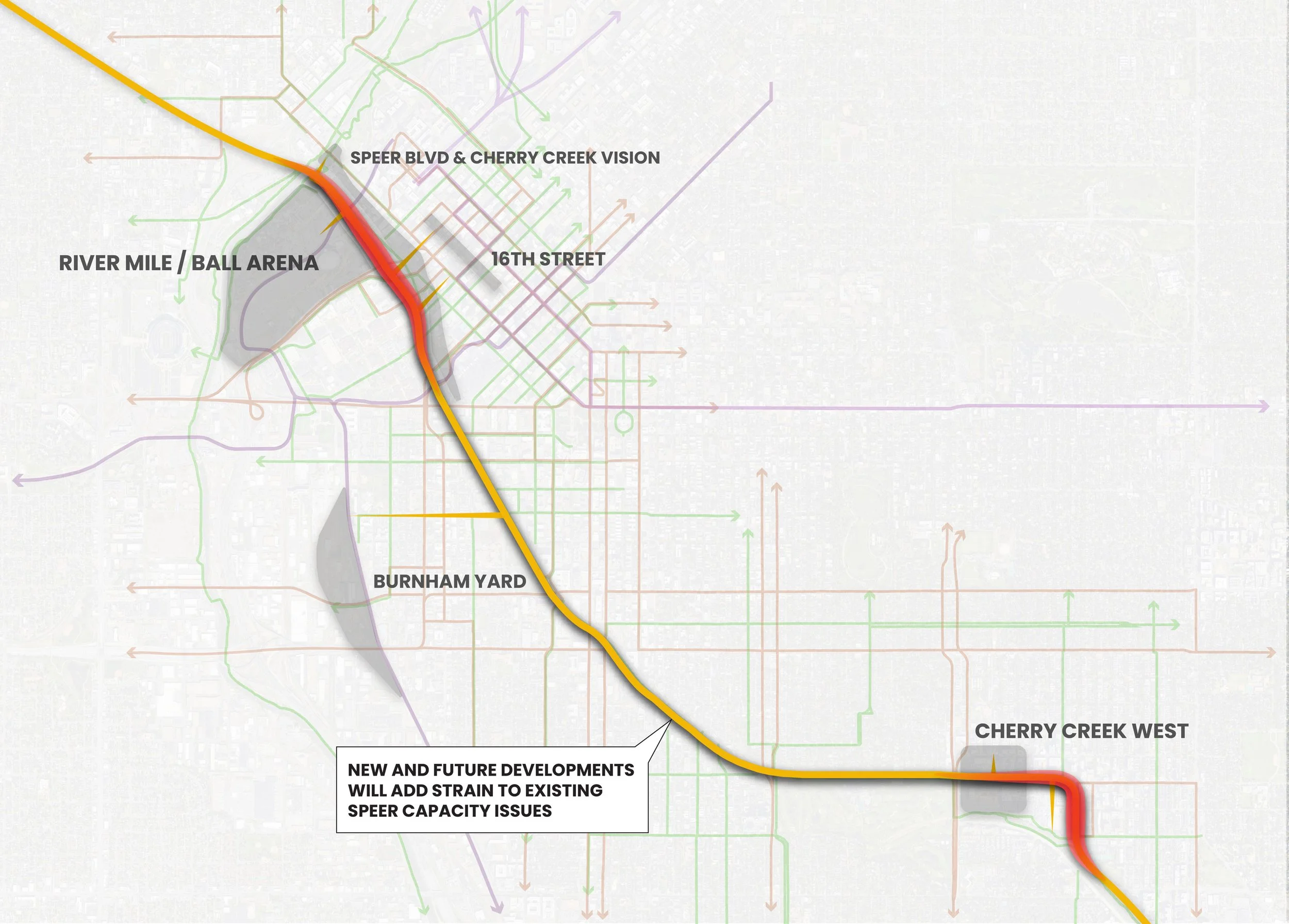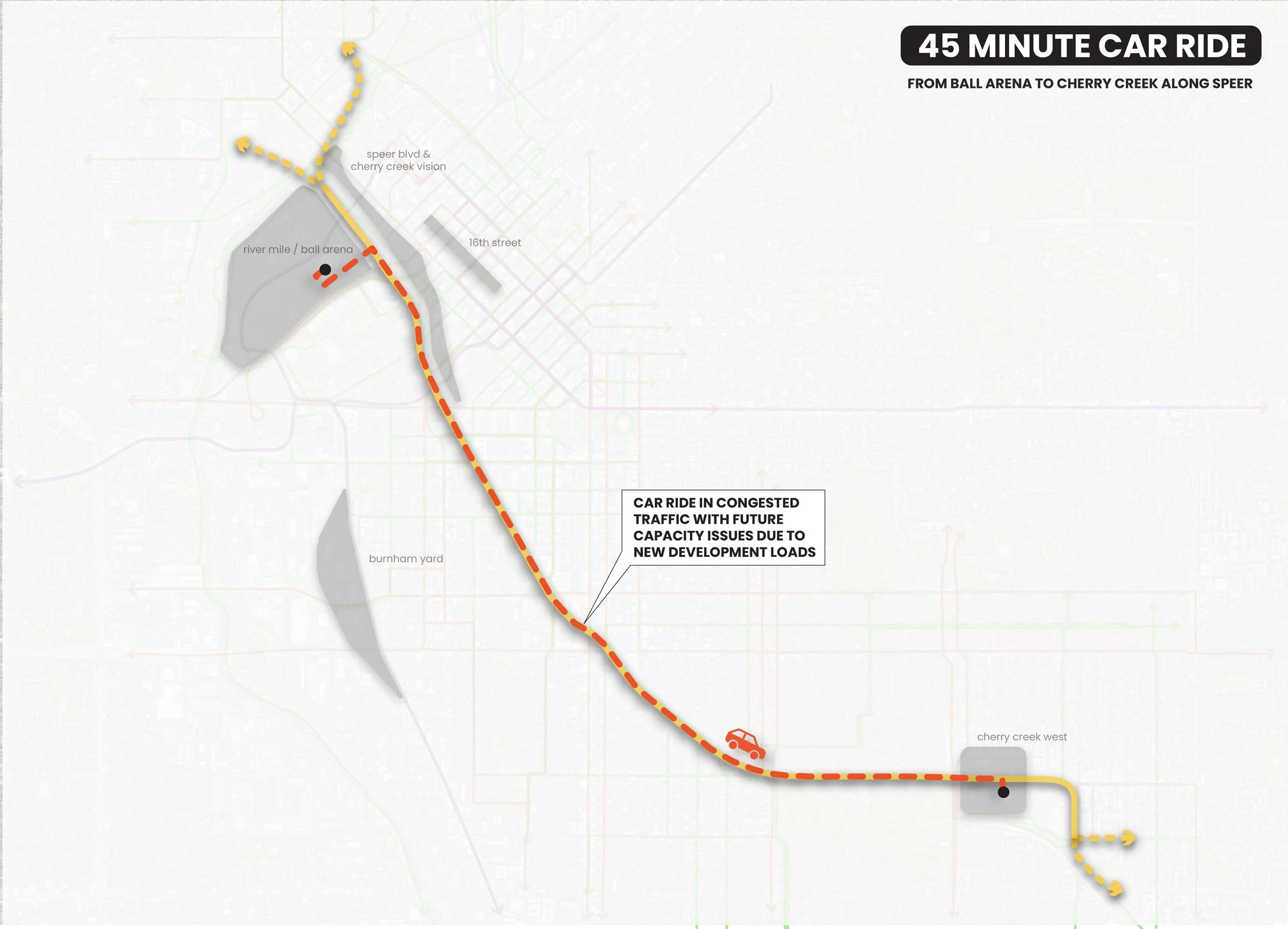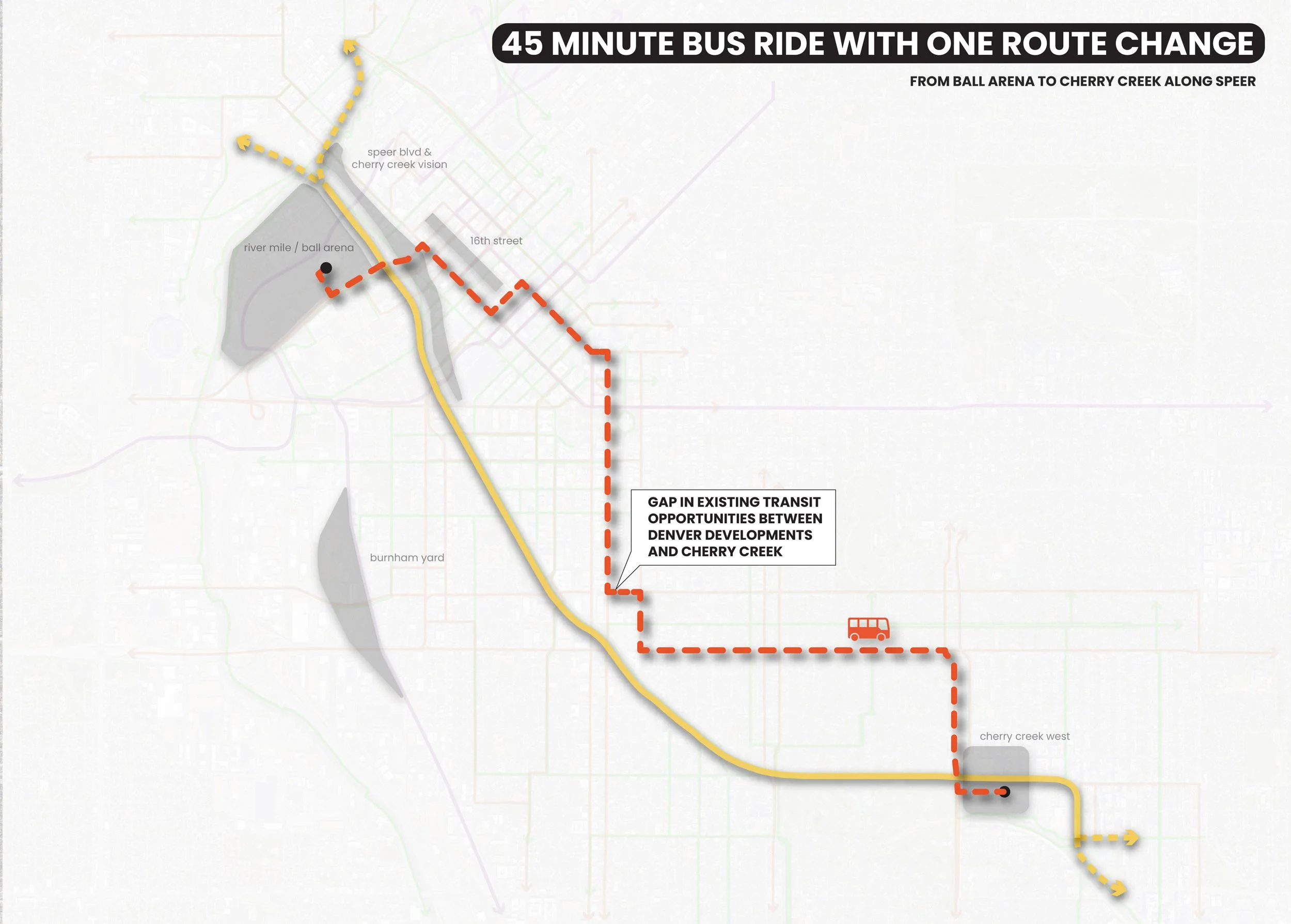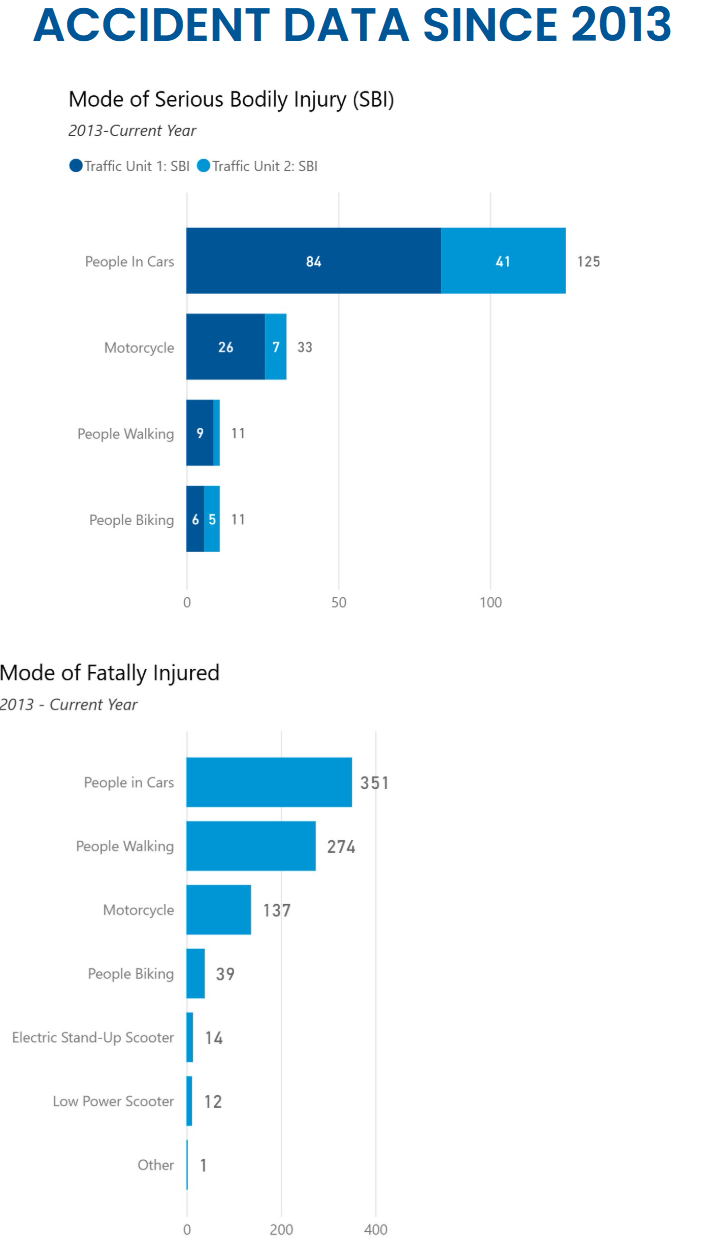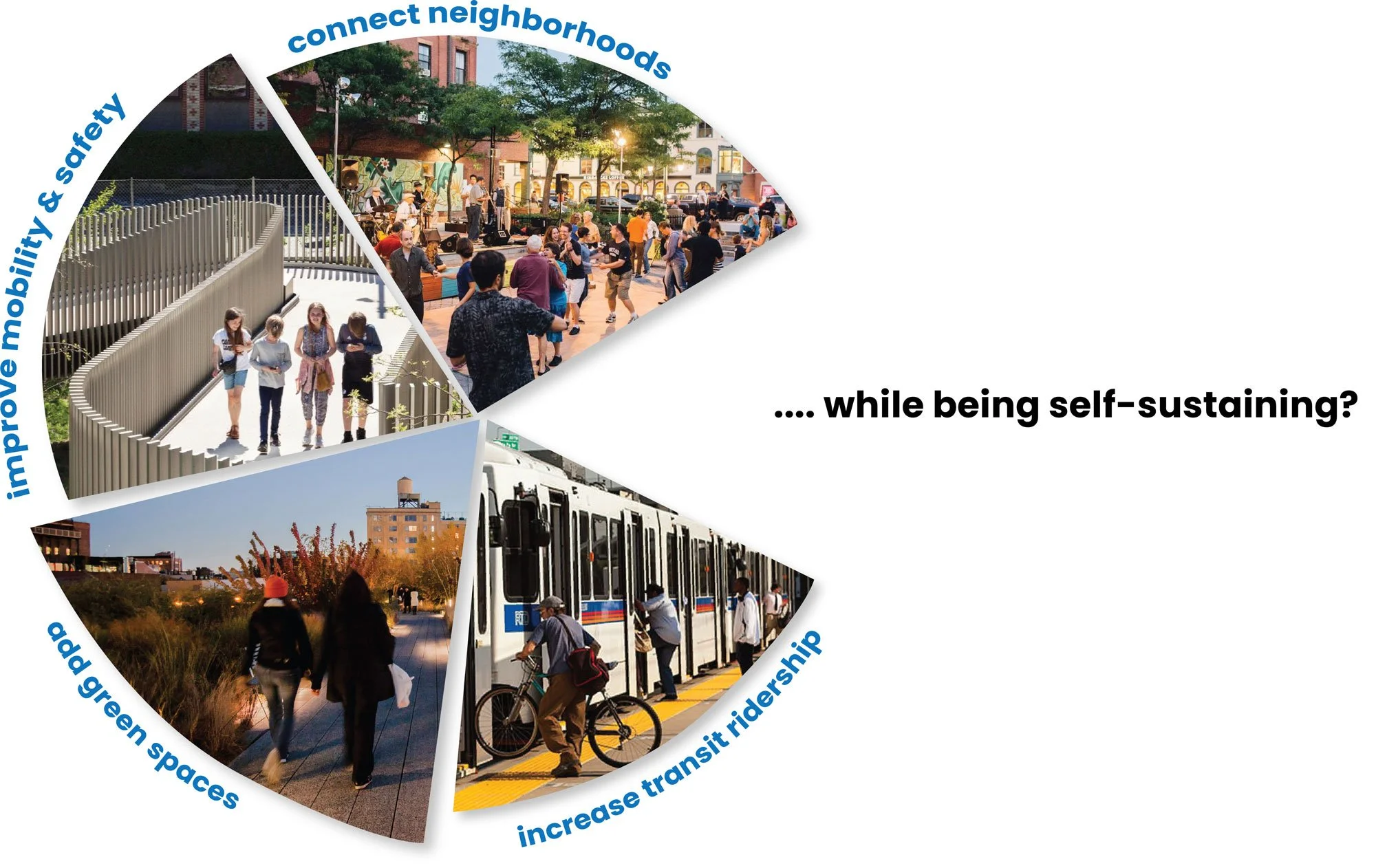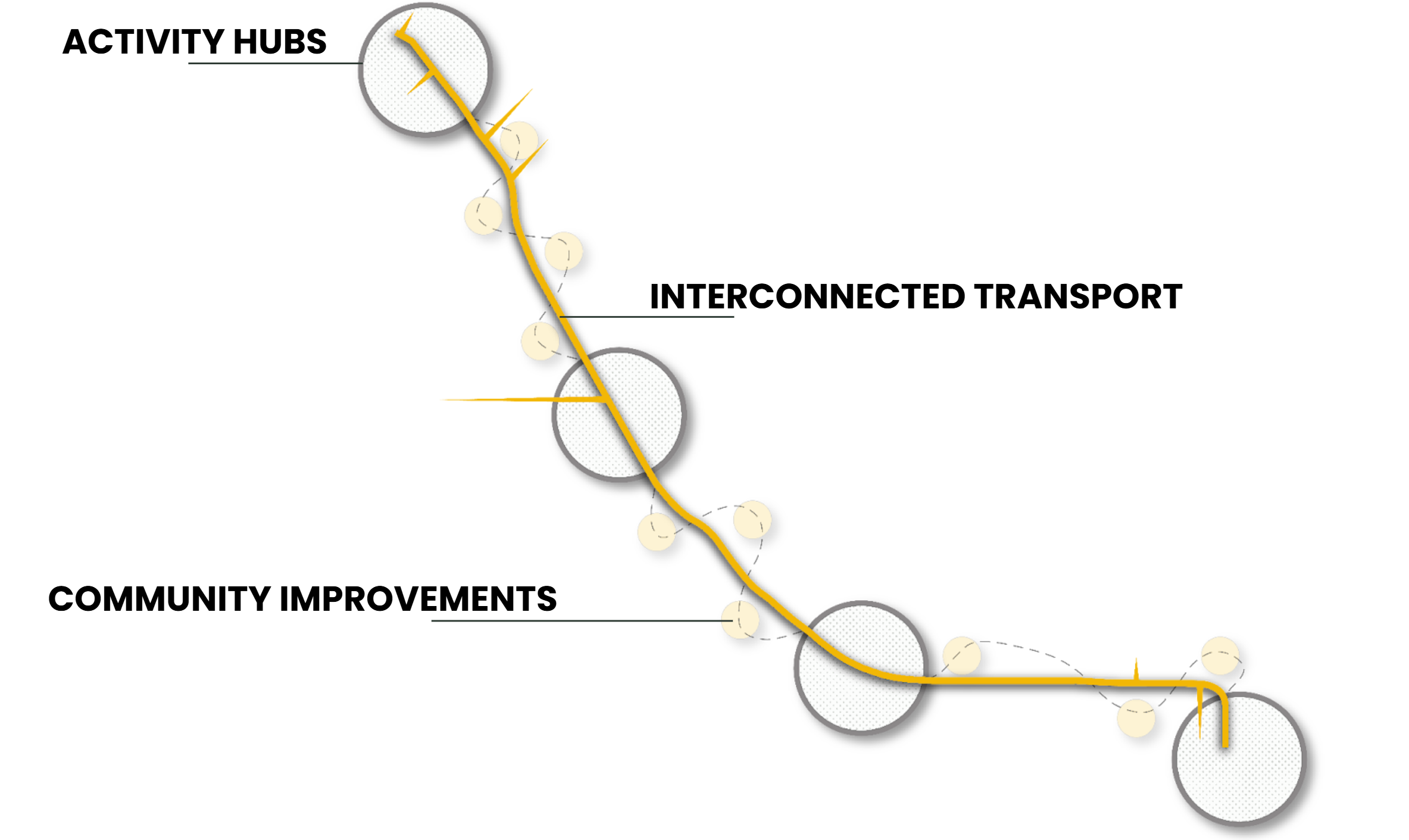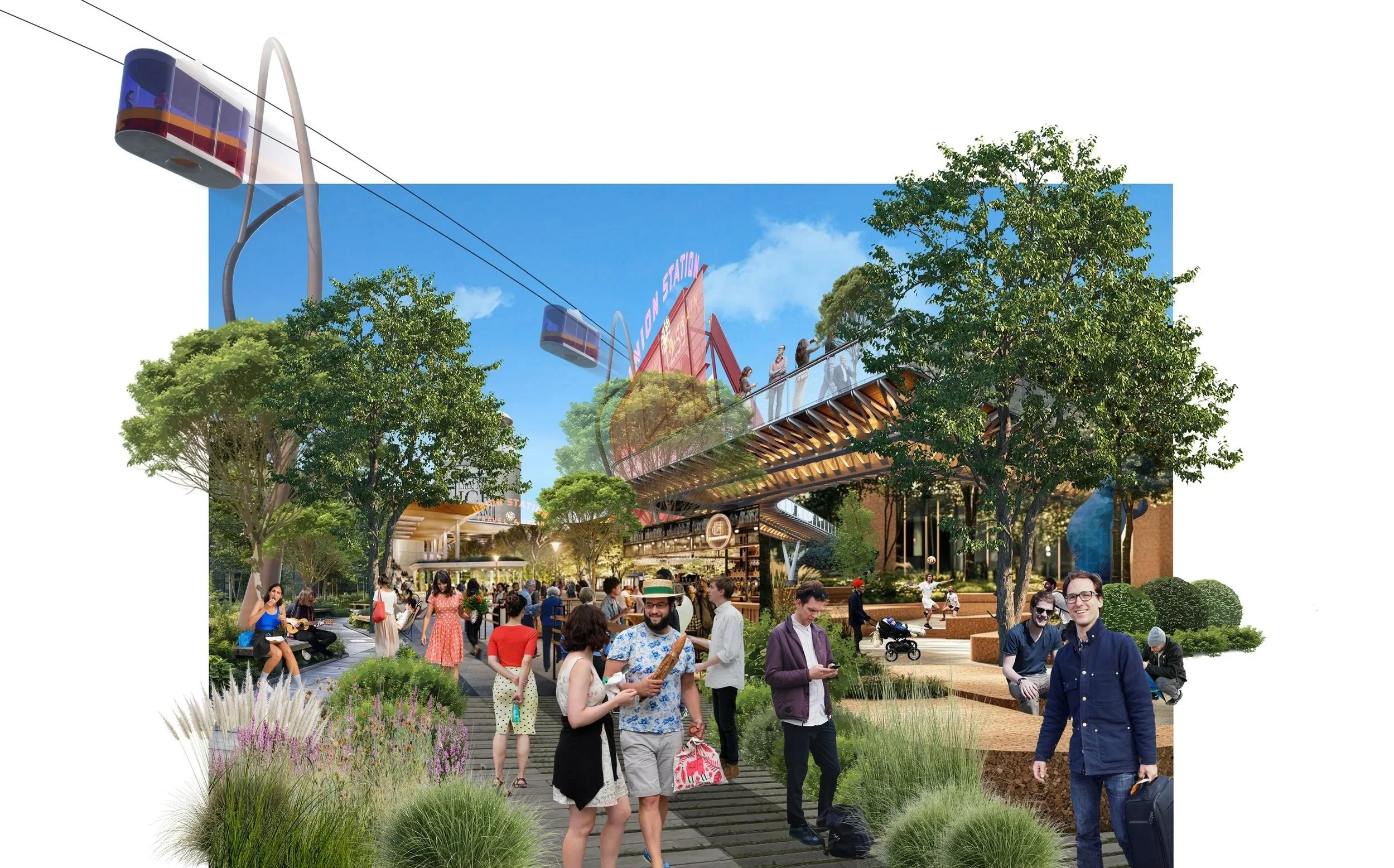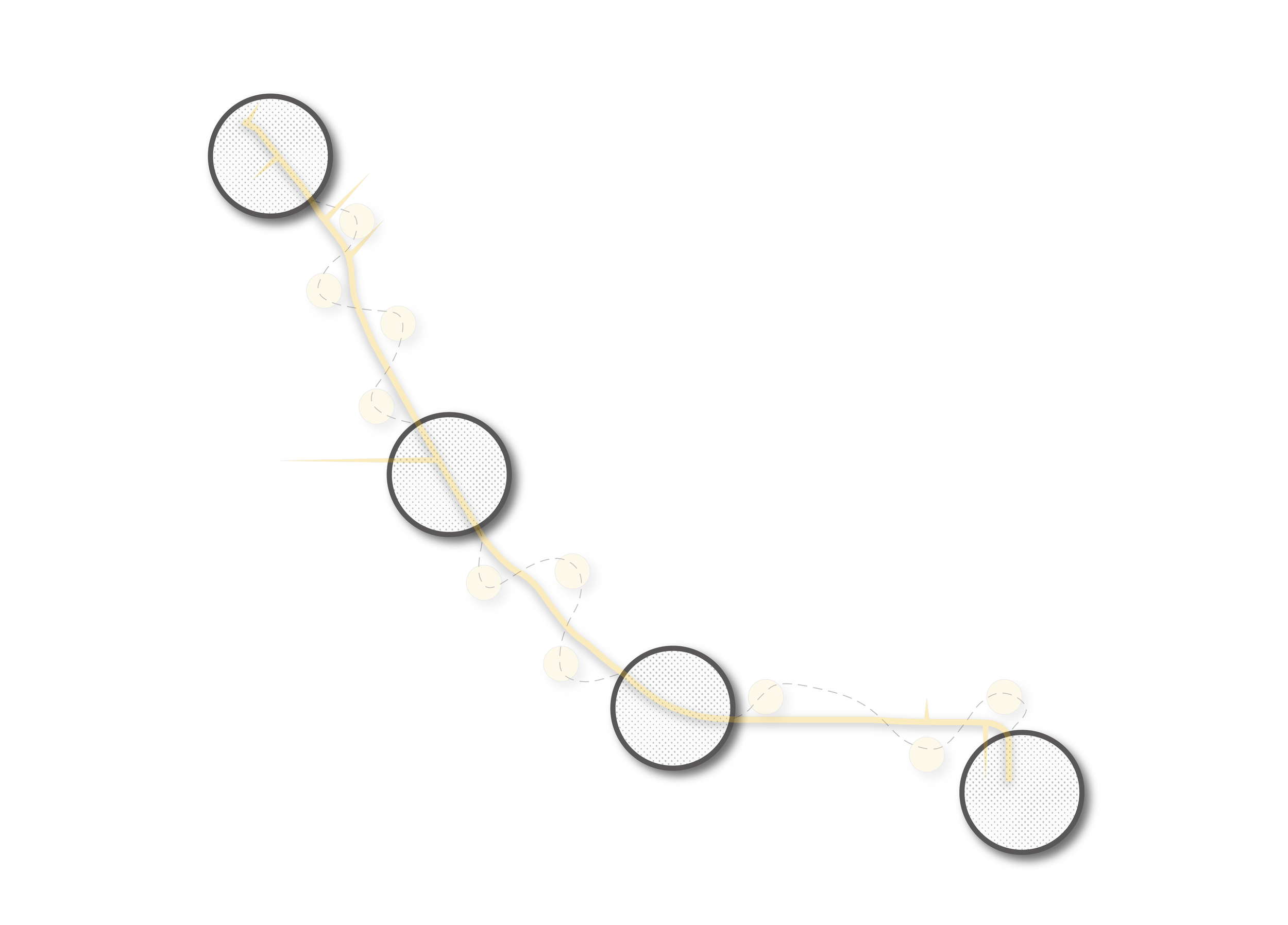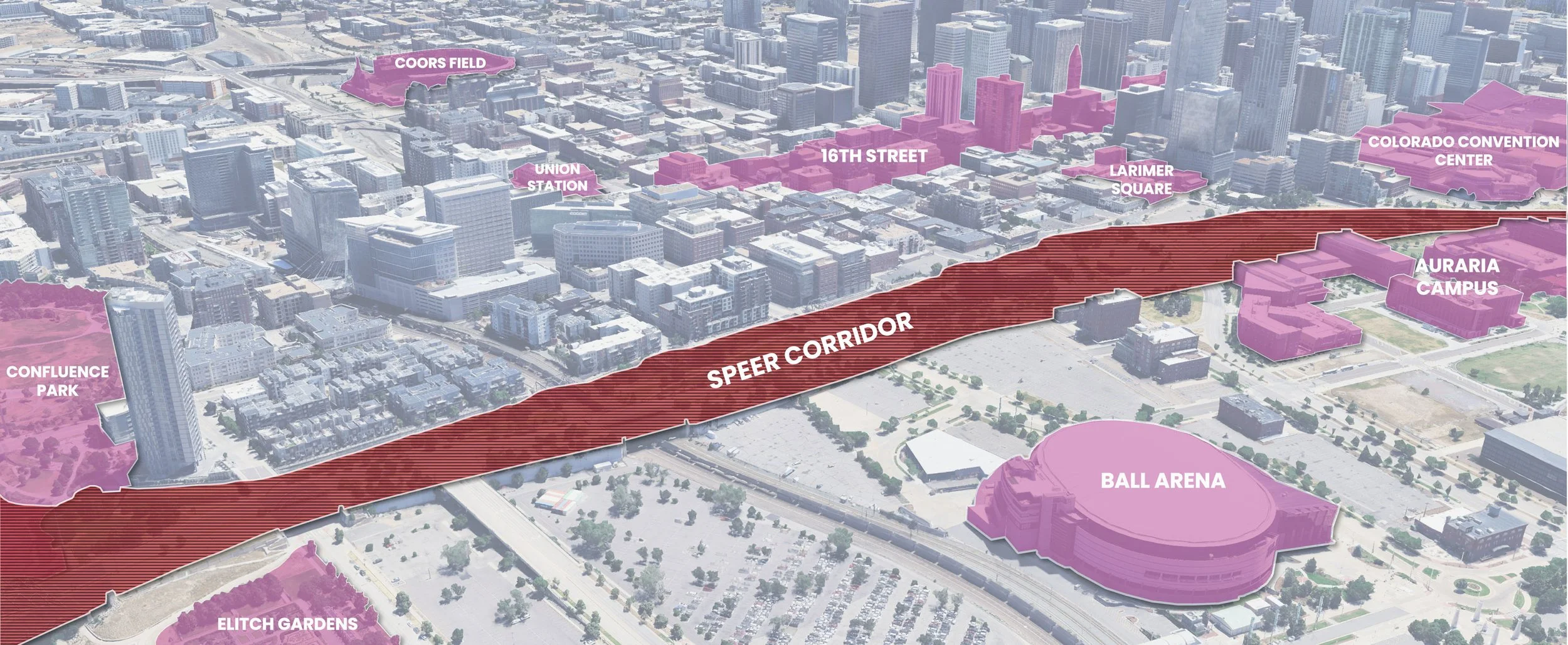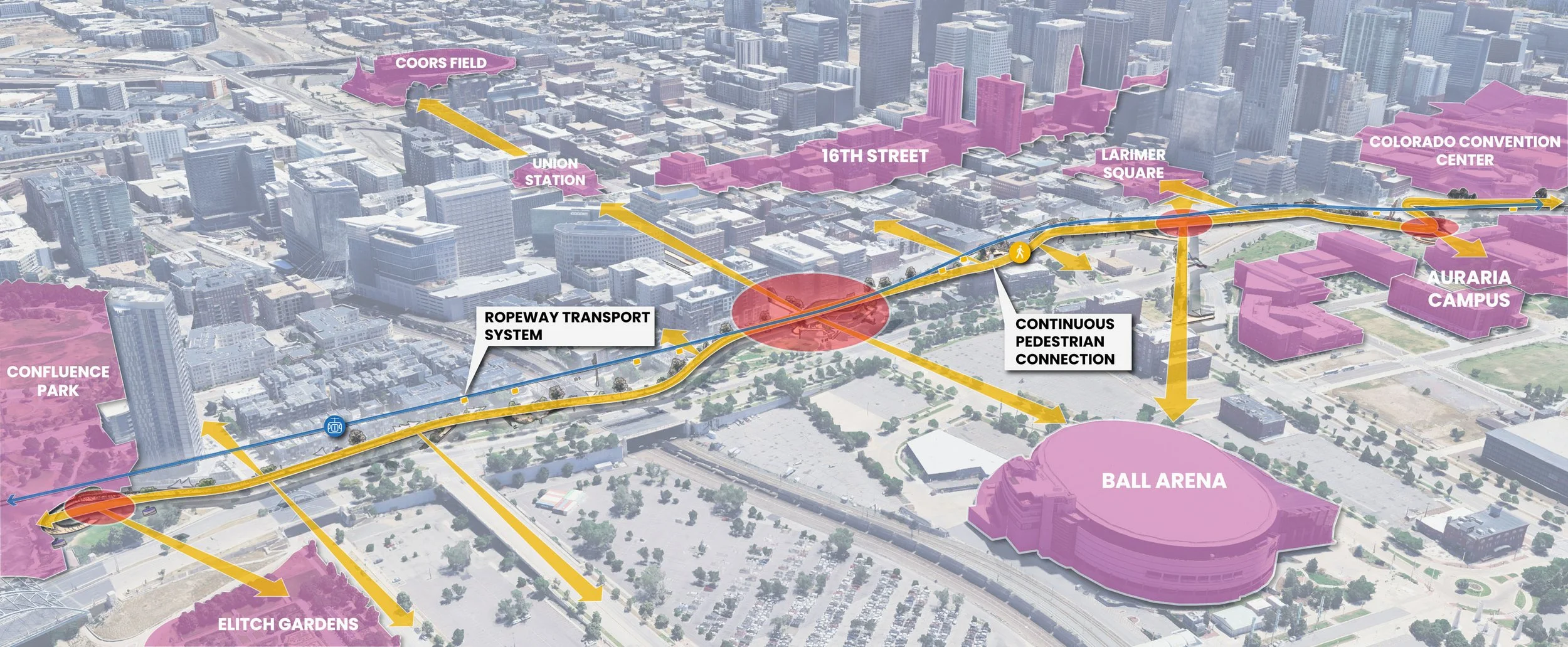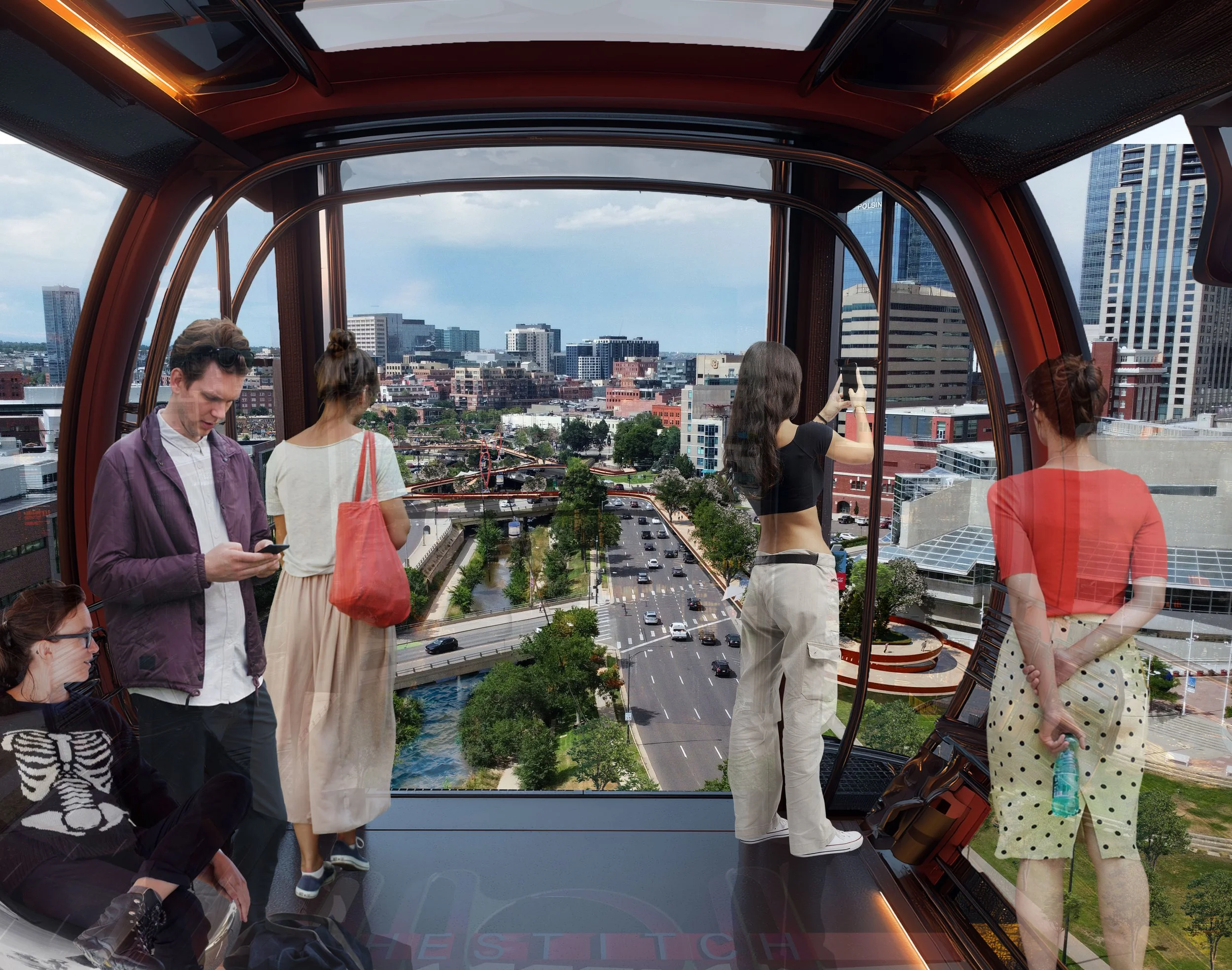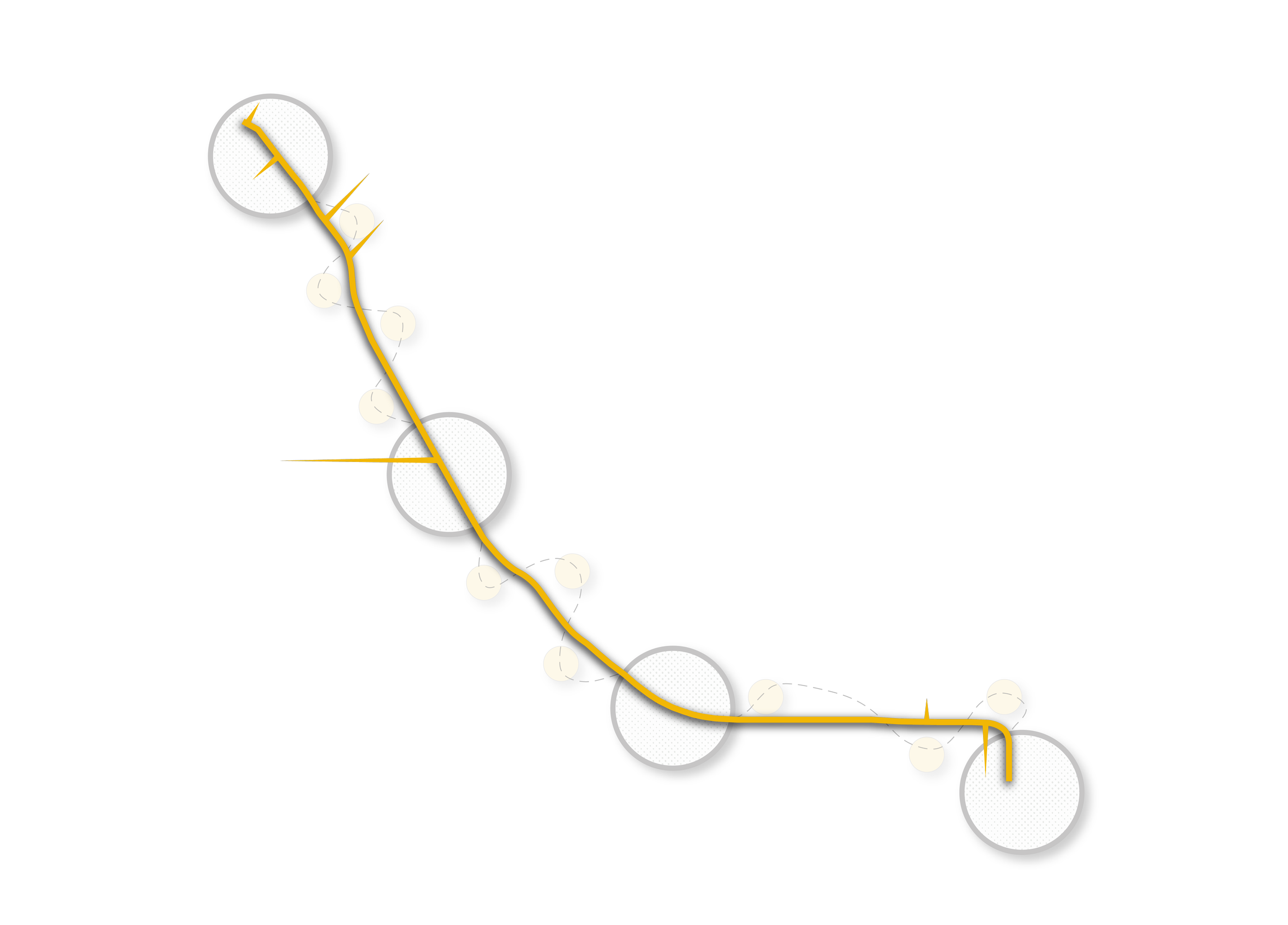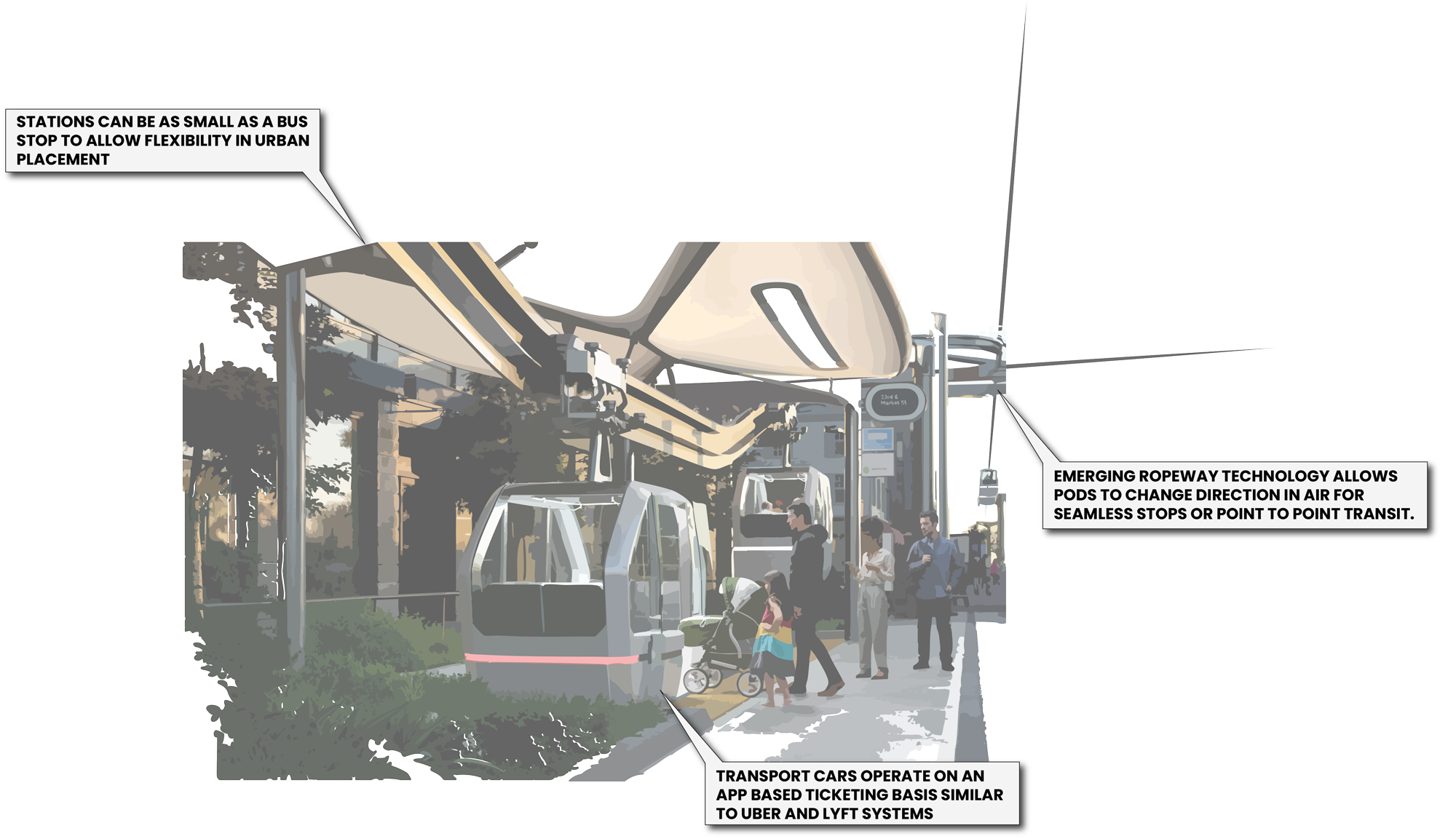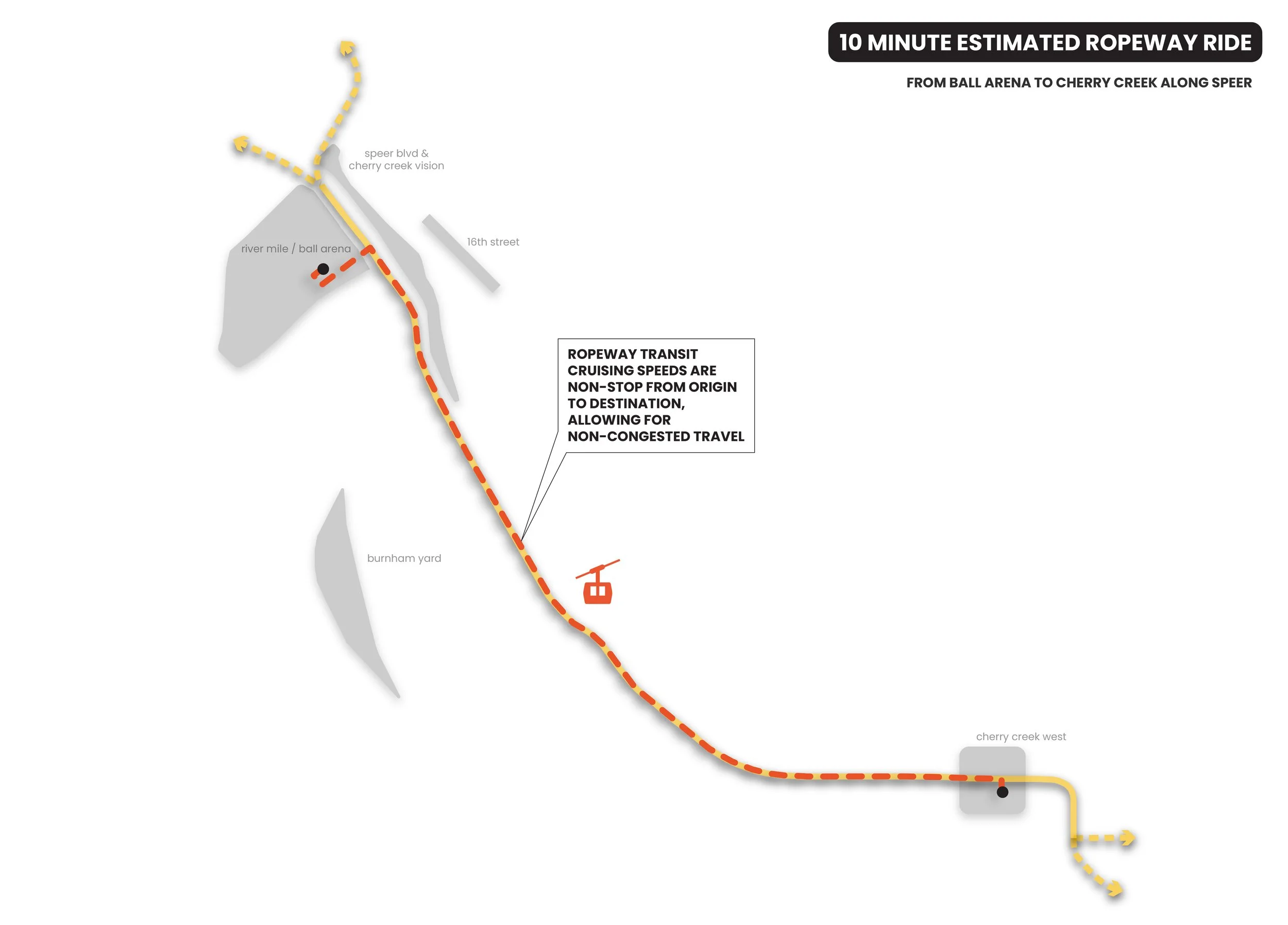THE STITCH
URBAN REGENERATION:
The Stitch aims to provide a series of hubs that link surrounding areas while promoting activity in between. It is a vision to “stitch the city,” where increased activity will bring safety and community connection.
DENVER,CO
The platforms and bridges that connect the urban ropeway stations create opportunities for vertical parklets and strings of pedestrian-focused routes that stitch together Denver’s unique neighborhoods, connecting LoHi, LoDo, The River Mile, Ball Arena, Union Station, The Theater District, the Convention Center, Auraria Campus, the Golden Triangle, Cherry Creek North and more. With a minimal footprint and a diagonal route through the city, The Stitch meets numerous bike trails, bus routes and train lines already within the city to create a dynamic, pedestrian oriented and well-connected urban environment for Denver.
THIS IS DENVER
dENVER public transport
Speer is interconnected with many other forms of transit in the city, due to its central location. Bike, bus, and rail routes overlap and interconnect at various points along Speer. Despite the opportunities for activity, Speer remains deactivated from the pedestrian point of view because it is dominated by vehicular use.
dENVER GREEN SPACE
Denver's green space per capita is below the national average of 13.1 acres per 1,000 residents
In parts of Denver, green space has decreased to fewer than 5 acres per 1,000 residents, less than half the national norm.
Excluding the undeveloped area around the airport, nearly half the land in Denver’s city limits is now paved or built over up from less than 20 percent in the mid-1970s, a Denver Post analysis of city and federal data found. And that figure could approach 70 percent by 2040. Only New York and a few mega cities exceed that level of what planners call “imperviousness.”
Denver ranks nearly last among major U.S. cities, including New York, in park space as a percentage of total area. It also ranks nearly last in park acres per resident.
SPEER DEACTIVATED
speer traffic trends
Speer Blvd prioritizes personal vehicular travel with pedestrians and cyclists having to cross 8 - 10 lanes at times.
Speer Blvd forms access barriers to Cherry Creek and disconnected surrounding communities.
Cherry Creek Trail does not accommodate multiple modes of travel or increased capacity due to width.
Cherry Creek Trail does not connect well to major destinations.
Traffic and safety concerns on Speer result in an absence of utilization of the Cherry Creek Trail, which runs adjacent to Speer.
This absence of use keeps its surrounding communities from integrating into one another, resulting in a disconnect.
Is it possible to…
…while being self sustaining?
The Stitch is a
community connection
The Stitch aims to provide a series of hubs that link surrounding areas while promoting activity in between. It is a vision to “stitch the city,” where increased activity will bring safety and community connection.
We have everything we need
This is how to connect it all
ACTIVITY HUBS
an activated corridor
INTERCONNECTED TRANSPORT
BUS TRANSIT
Bus routes attempting to serve Speer need a dedicated lane, which would enhance congestion in areas. These are still less energy efficient then other options due to stop and go costs and costs over the bus lifetime. These systems usually cost an average of 15 million a mile.
LIGHT RAIL
Light rail systems take 5-10 years for completion and involve complex underground utility relocation and extensive roadway disruptions, as well as costing 80-220 million a mile.
SUBWAY
Subway systems can cost 400-700 million a mile and involve extensive roadway and site disruption, taking up to 10 years for completion.
URBAN ROPEWAYS
Overall cost is an estimated $10 million per mile, and requires little to no disruption to existing infrastructure systems on the ground.
Ropeway systems can be designed, approved, and constructed in just 18-36 months.
To travel one mile, a ropeway vehicle would use 0.33 kWh per person - for comparison that’s about the same as running a toaster oven for 30 minutes.


